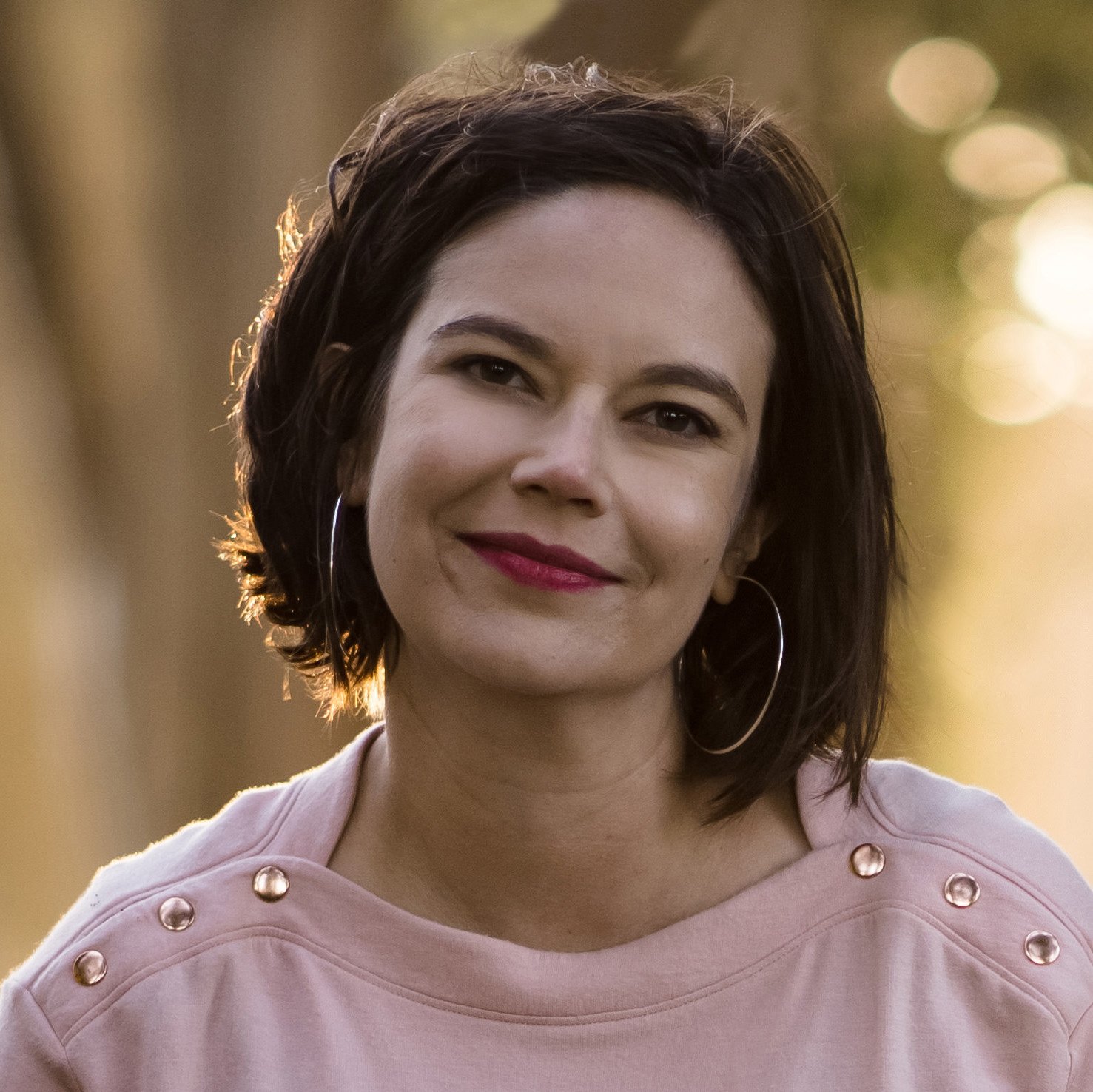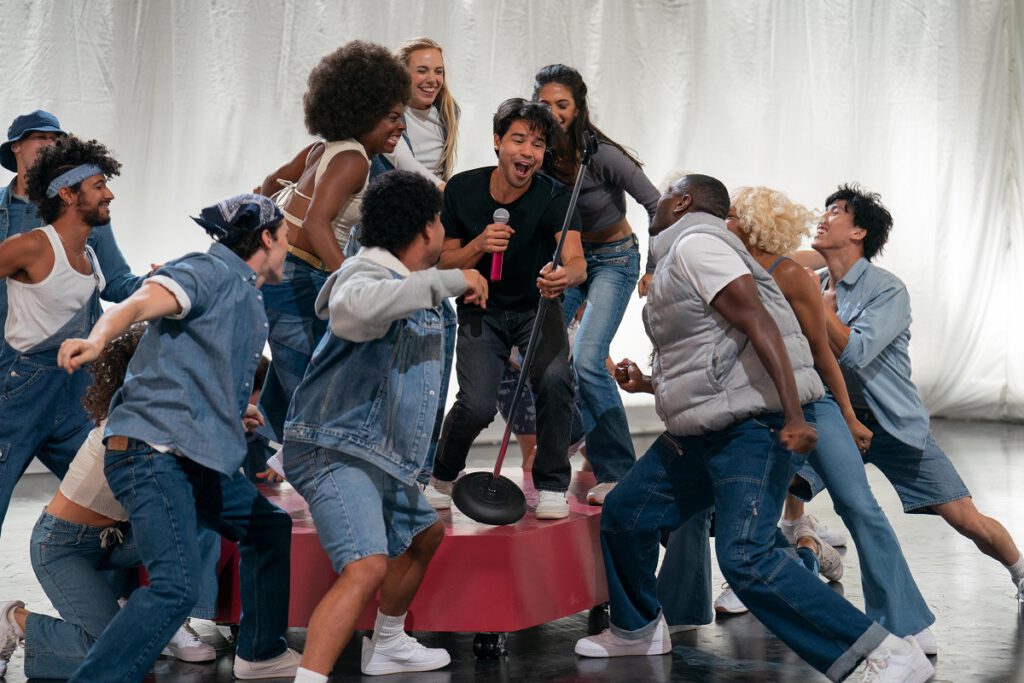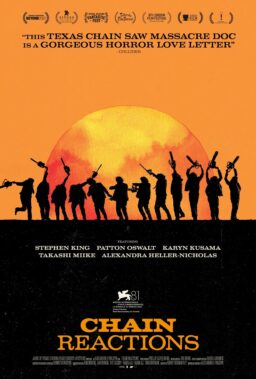The first few songs in Hulu’s “Up Here” are like a DIY musical in the worst way—they’re earnest and melody-less, the sort of numbers you’d expect from musical theater students at your local community college. “Crazy Ex-Girlfriend,” this is not.
But as the series continues, it finds its grove, musically and with its two central characters. Taking place in 1999, the show begins when Lindsay (Mae Whitman) runs away from her life as a suburban people-pleaser to be wild in New York City and work on her goal of becoming a writer. There she meets Miguel (Carlos Valdes), a sensitive investment banker, striving to feel safe economically and emotionally.
Of course, the two fall in (and out) of love, their romance couched in 20-year-old fashions and mores. Investment bankers are villains not heroes in stories set in this decade, but Miguel is likable despite his profession—the outsider smarter than his white peers but still the first to get scapegoated when something goes wrong.
As the show progresses, we get to know him and Lindsay better so that by the third episode of the season, they are more like people than the types we met in the pilot. The songs also get better, no longer so achingly earnest and striving but rather expressing real human experiences like when Lindsay leans into her fantasy of what a rebel girl can and should be in the hilarious, “You Gotta Be You.”
“Up Here” suffers from a convention where the voices in Lindsay and Miguel’s heads—think caricatures of a nagging or praise-filled mother—follow them around, serving as a Greek chorus of sorts. It’s supposed to dramatize their thought process but mostly makes them seem unhinged, talking to themselves on the street and disassociating regularly from reality.

But “Up Here” does offer some useful insight into the creative process, both Lindsay’s as a writer and Miguel’s as an artist. The best of these bits comes when Lindsay meets Ted McGooch (Brian Stokes Mitchell), who’s playing a Dr. Seuss type. As the writer of children’s books full of whimsy, McGooch is not a man stuck in childhood but rather fully engaged with his adult life—including sex clubs and drawing upon LGBTQ performance art to find inspiration for his stories. In today’s climate of book banning and anti-drag legislation, McGooch is a nice touch, reminding us of just who creates our cultural touchstones and how.
Even after the highly-successful McGooch takes Lindsay under his wing, she still struggles professionally. “Up Here” smartly parallels her journey to know herself—who is she if she’s not trying to meet her mother’s ideal of a good girl?—with her work to discover herself as a writer. Over the course of the first season, she tries on various personas, usually tied to the man she’s dating in an effort to find her own voice. Thankfully, the show is crystal clear she won’t find fulfillment until she learns to define herself for herself. It’s the tried-and-true feminist coming-of-age story and it works for a reason.

The series is smart about inverting gender expectations for Miguel too, even for those of us who’ve been consuming feminist stories since the action of “Up Here” takes place. Before his current gig as a banker, he made videos but when an office romance went (very) sour, he quit the whole profession. This choosing-your-career-based-on-your-love-life idea is usually reserved for women but “Up Here” doesn’t emasculate Miguel with it. Instead, the show understands that relationships are important—for everyone regardless of gender—but that nursing broken hearts or meeting romantic expectations can never replace knowing yourself.
“Up Here” treads lightly on the interracial nature of its central relationship, which mostly works, letting its characters be both of and more than their backgrounds. Lindsay’s culture and worldview are decidedly white—it’s easier for her family back home to tell people she had tapeworm psychosis than face criticism for her behavior. And Miguel comes from a close-knit Latino family—his mother passed away, but he imagines her as constantly insisting on his exceptionalism like our matriarchs do for their sons. These differences don’t keep our young lovers apart—there are plenty of plot machinations and classic miscommunications for that. But they do add texture to a show that otherwise might get caught in the cuteness of its chosen time period.
By the time Lindsay and Miguel celebrate the turn of the millennium in the finale, “Up Here” had fully captured me. I was rooting for these two nerds, not so much that they end up together, although I’m not against that. But rather that they figure out how to love themselves and how to carry a strong sense of self through their romantic relationships, families, and careers. And through their songs too, giving us not the generic numbers of the opening but rather the rich tunes of later episodes, which are informed by the nature of the character performing them.
Whole season was screened for review. “Up Here” premieres on Hulu on March 24th.












